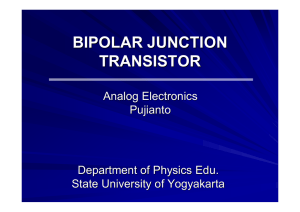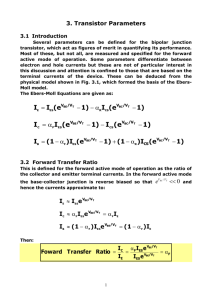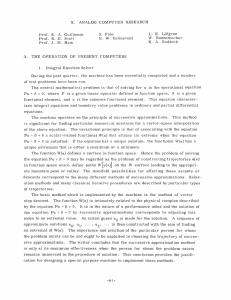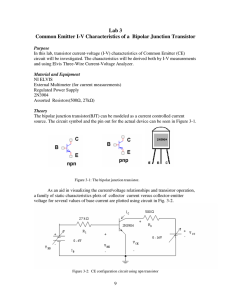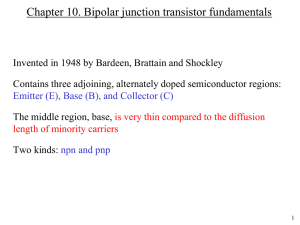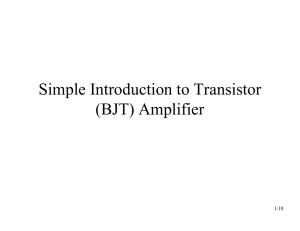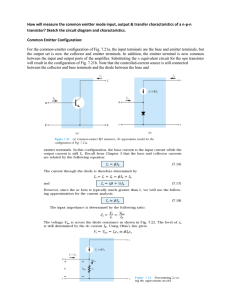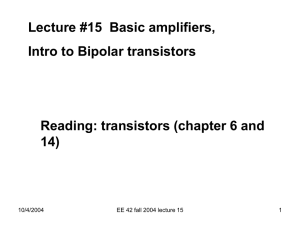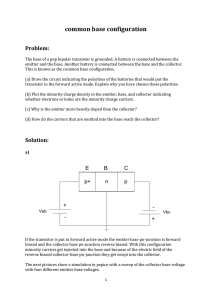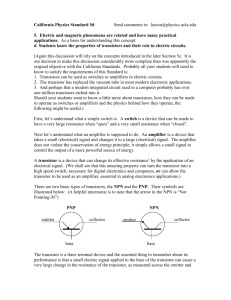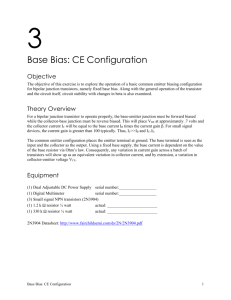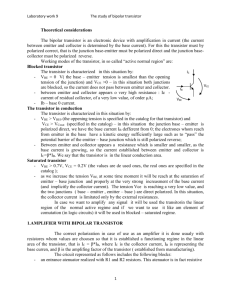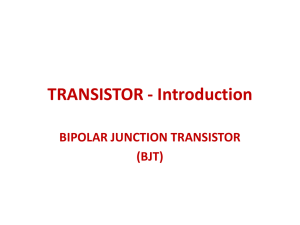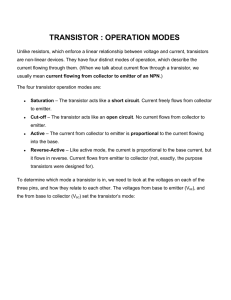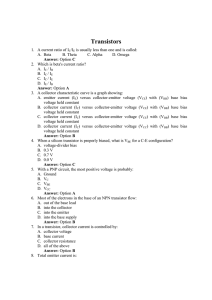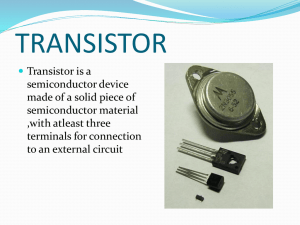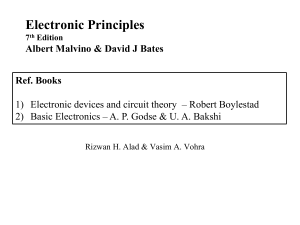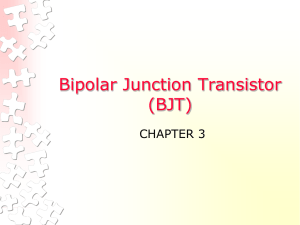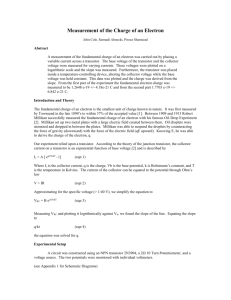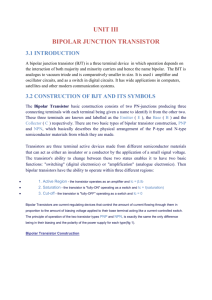of the transistor.
advertisement
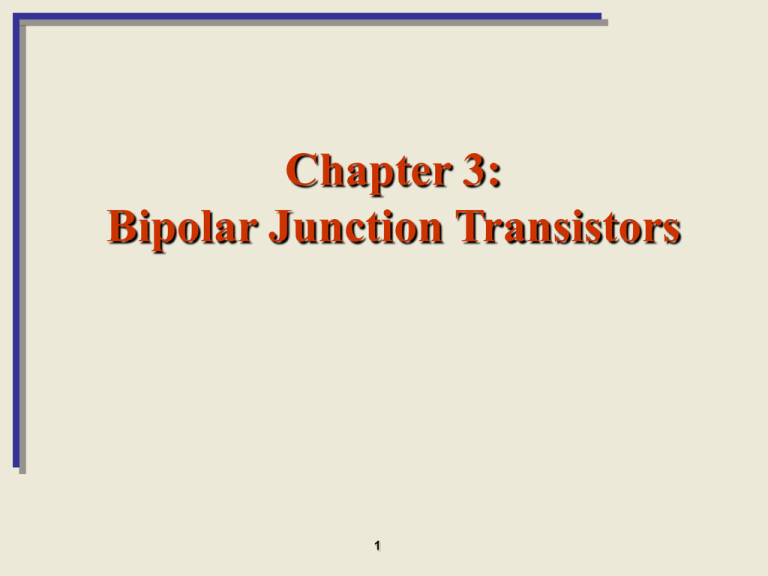
Chapter 3: Bipolar Junction Transistors 1 Transistor Construction There are two types of transistors: • pnp • npn pnp The terminals are labeled: • E - Emitter • B - Base • C - Collector npn 2 Transistor Operation With the external sources, VEE and VCC, connected as shown below: • • The emitter-base junction is forward biased The base-collector junction is reverse biased 3 Currents in a Transistor Emitter current is the sum of the collector and base currents: I E I C I B The collector current is comprised of two currents: I C I Cmajority I COminority 4 Common-Base Configuration The base is common to both input (emitter–base) and output (collector–base) of the transistor. 5 Common-Base Amplifier Input Characteristics This curve shows the relationship between of input current (IE) to input voltage (VBE) for various levels of output voltage (VCB). 6 Common-Base Amplifier Output Characteristics This graph demonstrates the output current (IC) to an output voltage (VCB) for various levels of input current (IE). 7 Operating Regions • Active—Operating range of the amplifier. • Cutoff—The amplifier is basically off. There is voltage, but little current. • Saturation—The amplifier is full on. There is current, but little voltage. 8 Approximations Emitter and collector currents: IC IE Base-emitter voltage: V BE 0.7 9 Alpha (a) Alpha (a) relates the DC currents IC and IE : α dc IC IE Ideally: a = 1 In reality: a is between 0.9 and 0.998 Alpha (a) in the AC mode: α ac ΔI C ΔI E 10 Transistor Amplification Currents and Voltages: IE Ii I I C L V L I I Vi Ri 200mV 20 Ω Voltage Gain: Av 10mA E i I L 10 mA R ( 10 ma )( 5 kΩ ) 50 V 11 VL Vi 50V 200mV 250 Common–Emitter Configuration The emitter is common to both input (base-emitter) and output (collectoremitter). The input is on the base and the output is on the collector. 12 Common-Emitter Characteristics Collector Characteristics Base Characteristics 13 Common-Emitter Amplifier Currents Ideal Currents IC = a IE IE = IC + IB Actual Currents IC = a IE + ICBO where ICBO = minority collector current This is usually so small that it can be ignored, except in high power transistors and in high temperature environments. When IB = 0 A the transistor is in cutoff, but there is some minority current flowing called ICEO. I CEO I CBO 1a I B 0 μA 14 Beta () represents the amplification factor of a transistor. ( is sometimes referred to as hfe, a term used in transistor modeling calculations) In DC mode: β dc IC IB In AC mode: ac IC IB V C E cons tan t 15 Beta () Determining from a Graph β AC (3.2 mA 2.2 mA) (30 μA 20 μA) 1 mA 10 μA V C E 7.5 100 β DC 2.7 mA 25 A V C E 7.5 108 Note: AC = DC 16 Beta () Relationship between amplification factors and a α β β1 β α α1 Relationship Between Currents I C βI B I E (β 1)I B 17 Common–Collector Configuration The input is on the base and the output is on the emitter. 18 Common–Collector Configuration The characteristics are similar to those of the commonemitter configuration, except the vertical axis is IE. 19 Limitations of Operation for Each Configuration VCE is at maximum and IC is at minimum (ICmax= ICEO) in the cutoff region. IC is at maximum and VCE is at minimum (VCE max = VCEsat = VCEO) in the saturation region. The transistor operates in the active region between saturation and cutoff. 20 Power Dissipation Common-base: PCmax V CB I C Common-emitter: PCmax V CE I C Common-collector: PCmax V CE I E 21 Transistor Specification Sheet more… 22 Transistor Testing • Curve Tracer Provides a graph of the characteristic curves. • DMM Some DMMs measure bDC or hfe. • Ohmmeter 23 Transistor Terminal Identification 24


